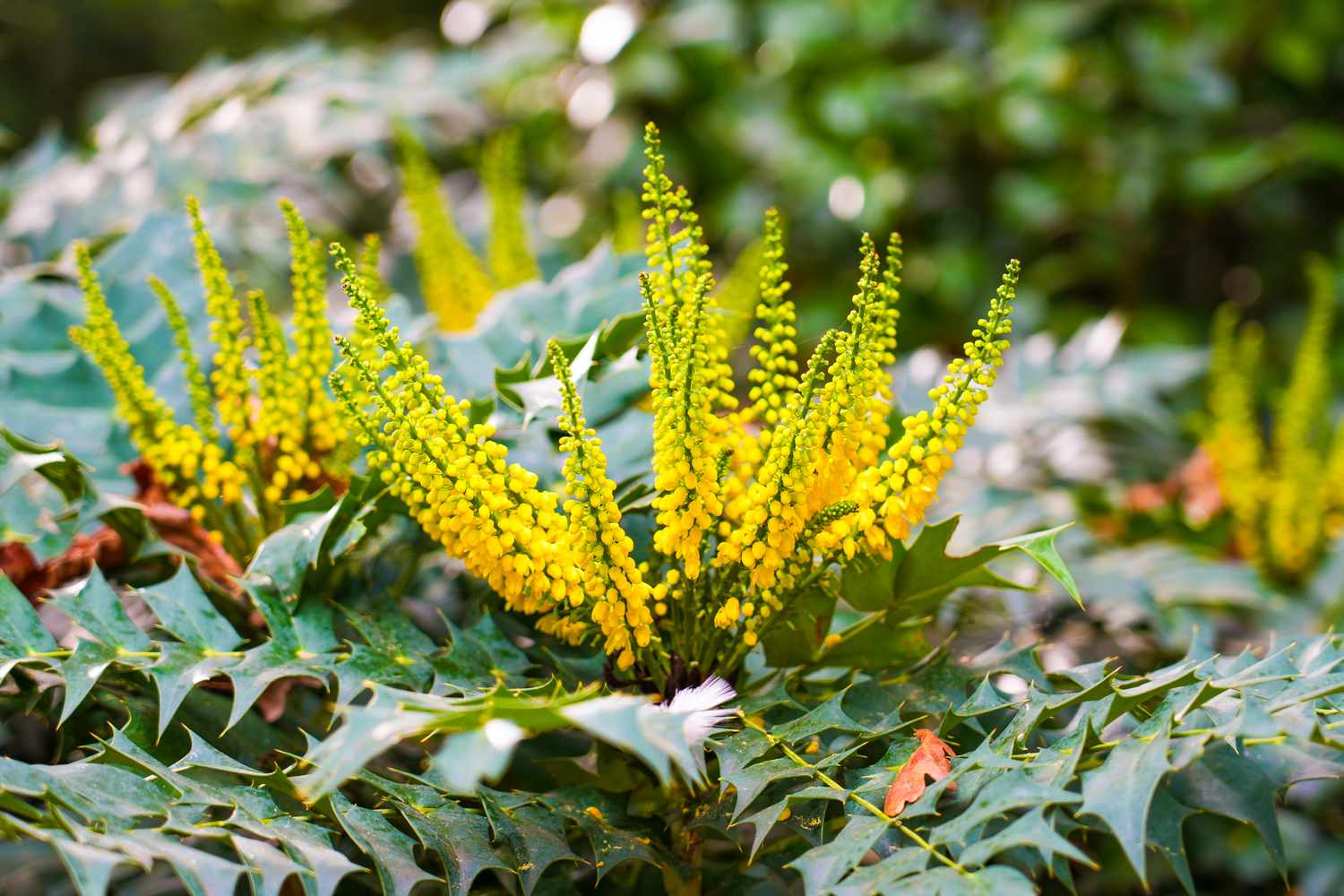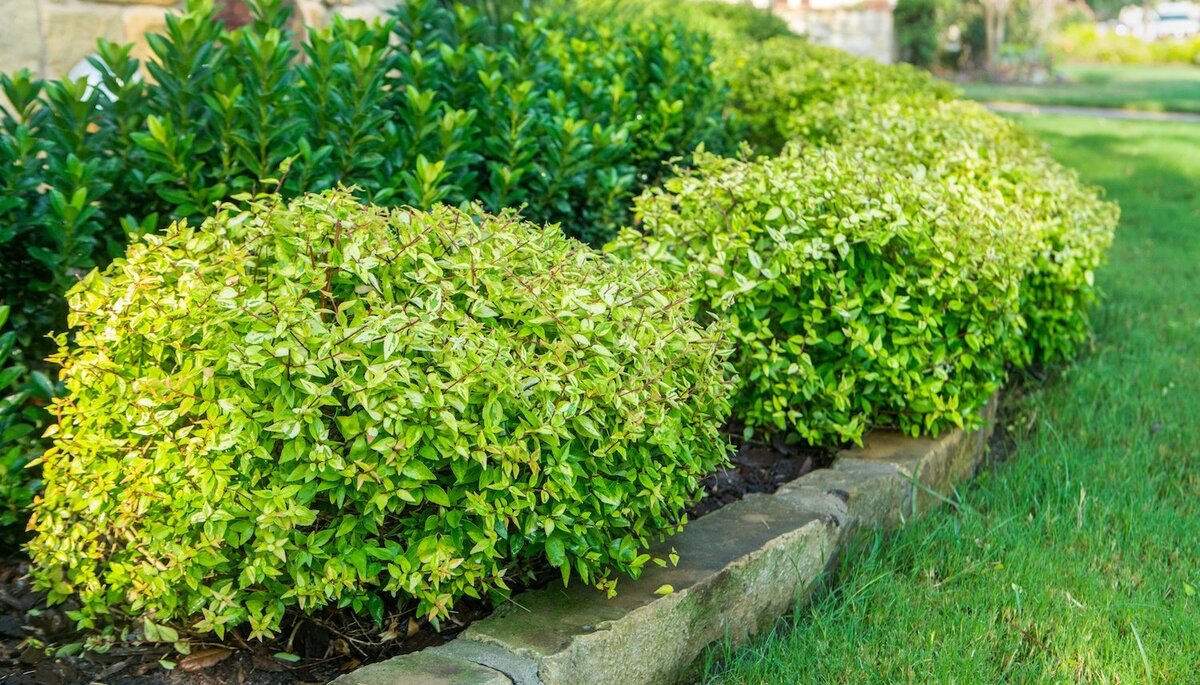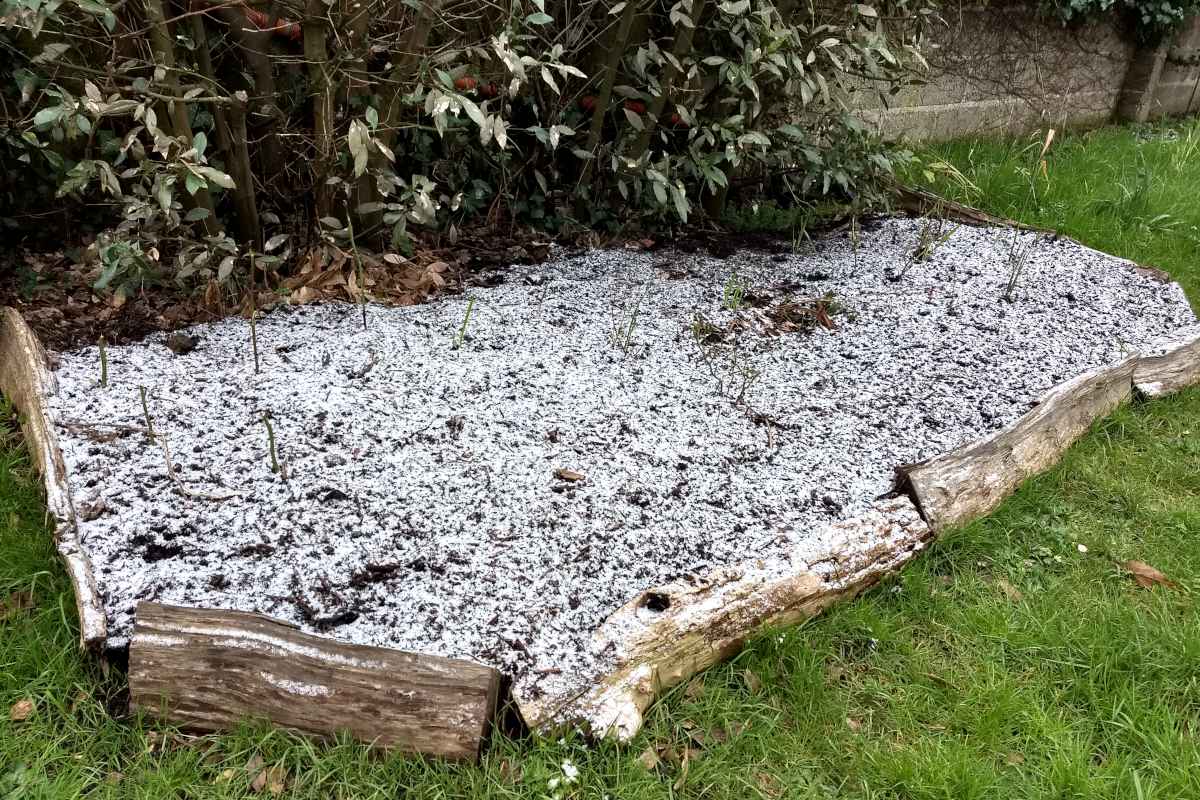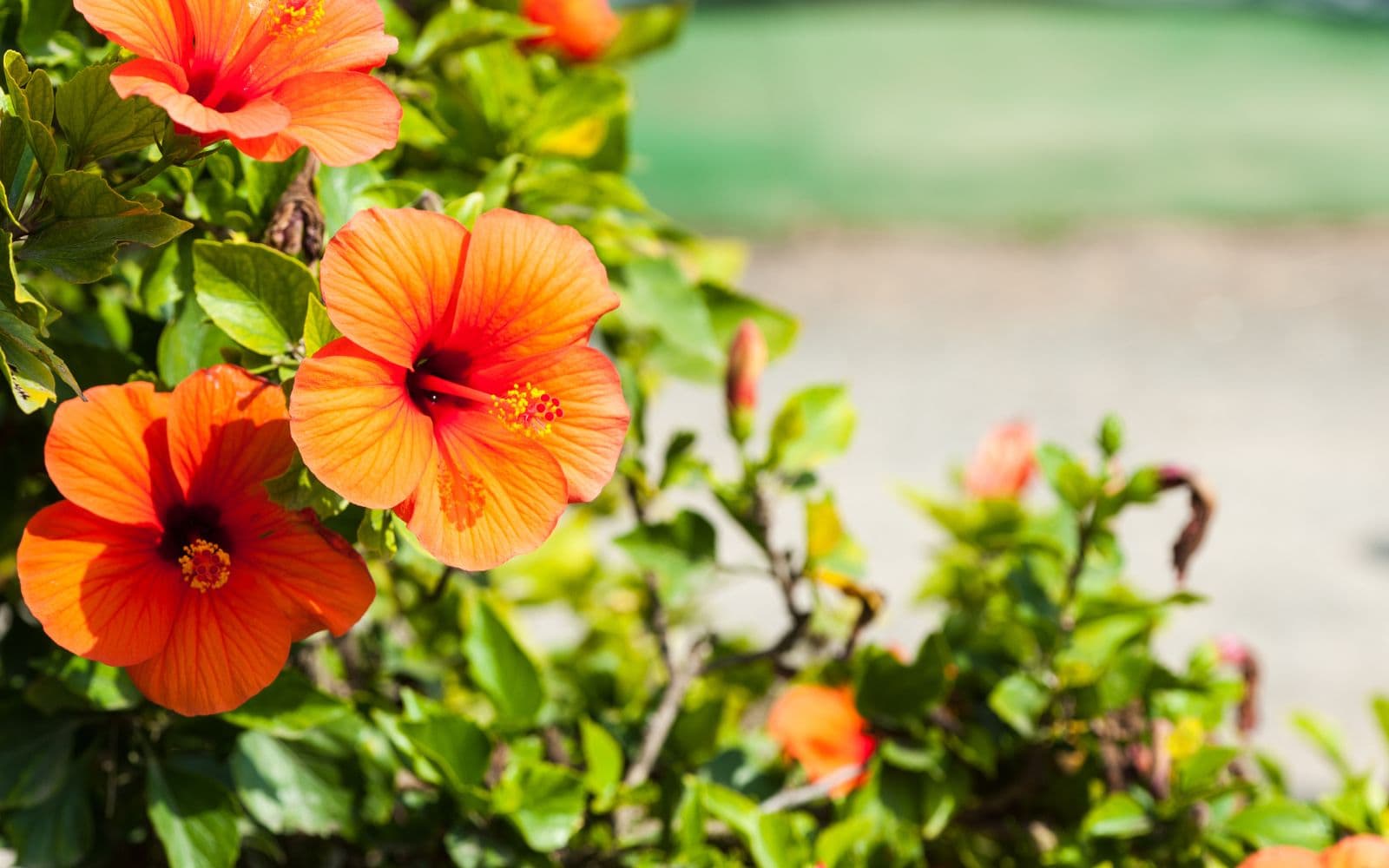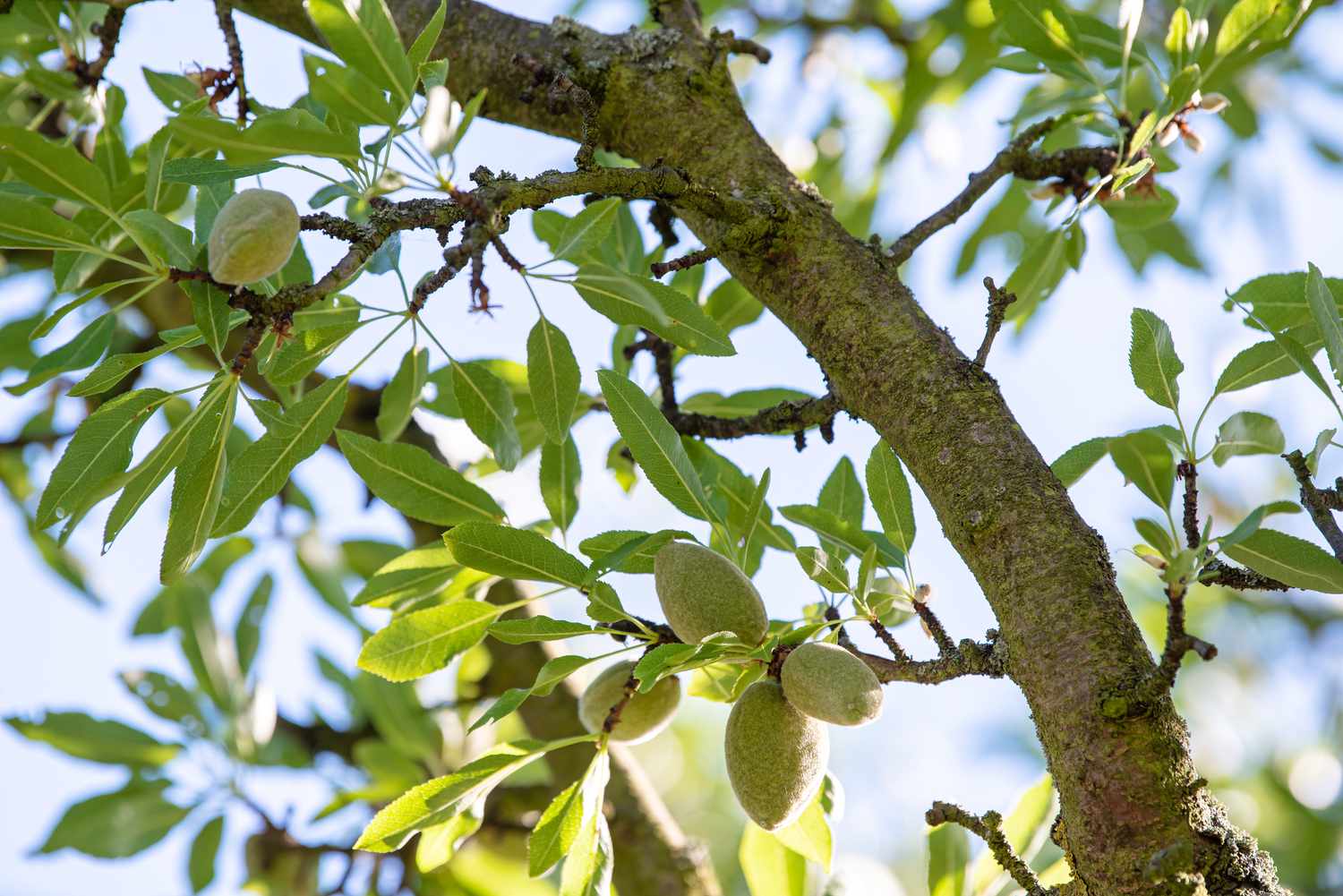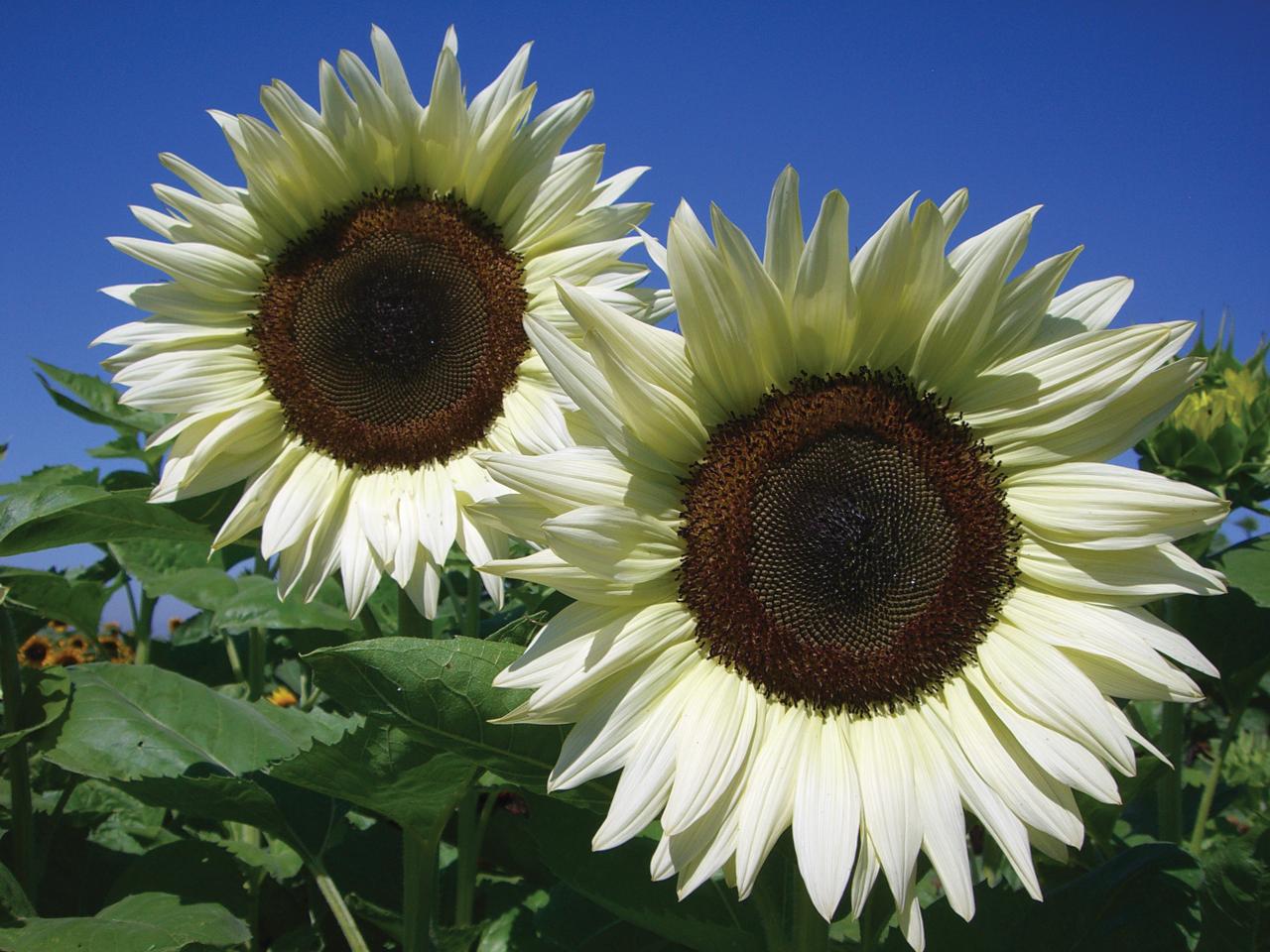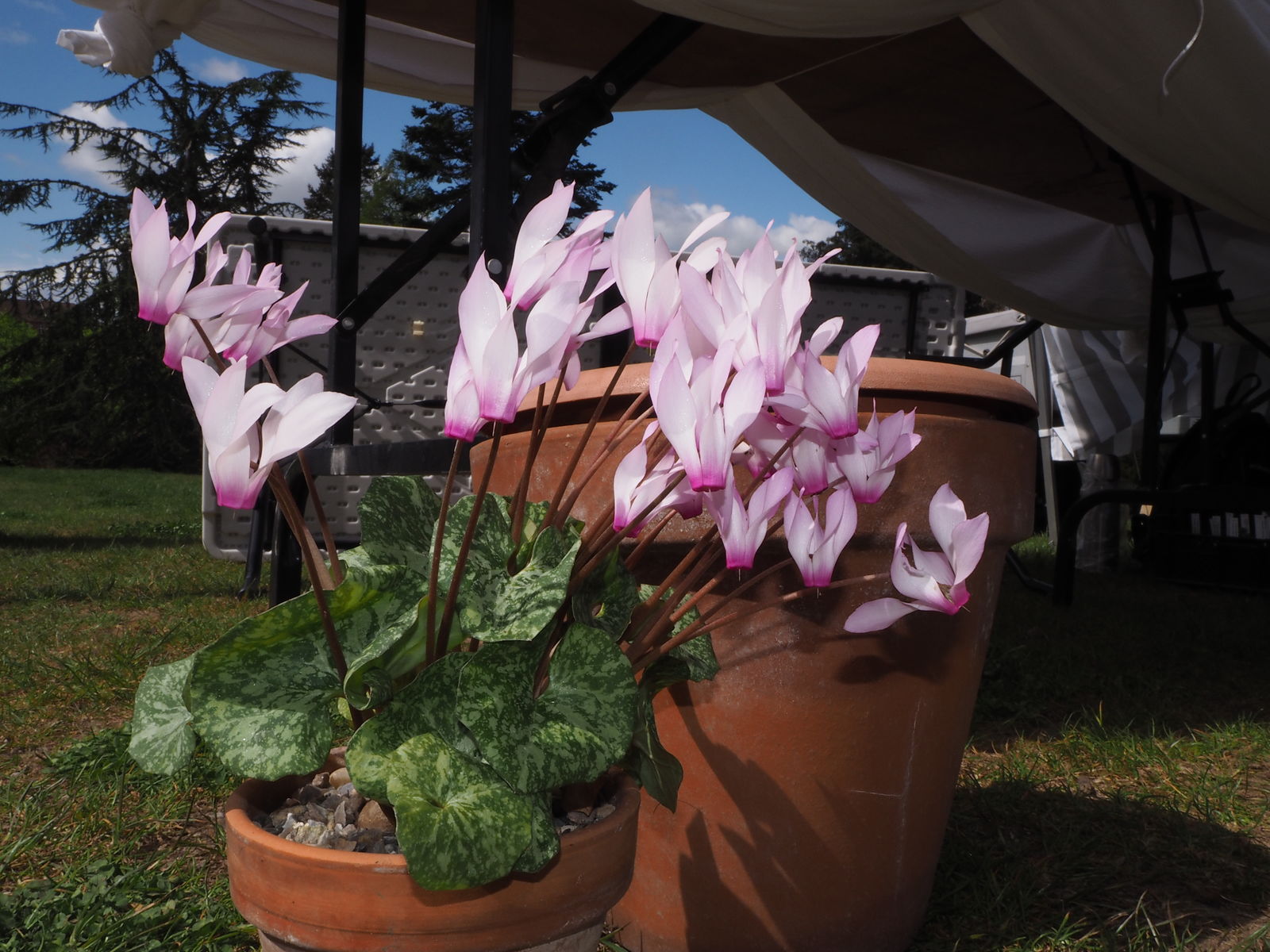Home>Gardening News and Trends>Latest News>A Layer Of A Forest Beneath The Canopy Where Shrubs Plants And Other Types Of Vegetation Grow.


Latest News
A Layer Of A Forest Beneath The Canopy Where Shrubs Plants And Other Types Of Vegetation Grow.
Modified: February 2, 2024
Get the Latest News about the Layer of a Forest Beneath the Canopy, where Shrubs, Plants, and Other Types of Vegetation Grow. Stay Updated!
(Many of the links in this article redirect to a specific reviewed product. Your purchase of these products through affiliate links helps to generate commission for Chicagolandgardening.com, at no extra cost. Learn more)
Table of Contents
- Introduction
- Definition of Understory
- Importance of Understory in Forest Ecosystems
- Characteristics of Understory Vegetation
- Types of Vegetation in the Understory
- Shrubs in the Understory
- Plants in the Understory
- Other Types of Vegetation in the Understory
- Factors Affecting Understory Growth
- Ecological Functions of Understory Vegetation
- Conservation and Management of Understory
- Conclusion
Introduction
The understory is a vital layer of vegetation that thrives beneath the forest canopy. It is home to a diverse array of shrubs, plants, and other types of vegetation that play a crucial role in the overall health and functioning of forest ecosystems. While often overshadowed by the towering trees above, the understory serves as a dynamic and biodiverse community that is essential to the survival and well-being of many species.
Unlike the canopy, which receives ample sunlight and rainfall, the understory experiences lower light levels and competition for resources. Despite these challenges, the plants and shrubs in the understory have adapted and thrived in this unique environment. They have developed specialized characteristics and strategies to maximize their chances of survival, making the understory a fascinating and ecologically important component of the forest.
The understory vegetation plays a vital role in several key aspects of forest ecosystem processes. It acts as a buffer, protecting the forest floor from excessive sunlight, temperature fluctuations, and erosion. The understory also plays a critical role in nutrient cycling, as it contributes to the decomposition of organic matter and provides habitat and food for numerous wildlife species.
Understanding the diverse types of vegetation found in the understory is fundamental to studying and managing forest ecosystems. This knowledge helps researchers and conservationists recognize the intricate ecological relationships that exist within this layer and highlights the importance of preserving and conserving this unique habitat.
This article will delve deeper into the understory, exploring its definition, characteristics, and the different types of vegetation that can be found within this layer. We will also discuss the ecological functions of the understory and the factors that affect understory growth. Lastly, we will examine the conservation and management strategies that can help preserve and protect the understory vegetation.
Definition of Understory
The understory, also known as the understorey, refers to the layer of vegetation that grows beneath the forest canopy. It is a distinct and ecologically significant stratum that occupies the space between the forest floor and the lower branches of the overstory trees. The understory vegetation includes a wide range of plant species, such as shrubs, herbaceous plants, ferns, mosses, and small trees.
Unlike the canopy, which consists of tall and dominant trees that receive the majority of sunlight, the understory is characterized by reduced light levels due to the shading from the canopy trees. Consequently, the understory plants have adapted to survive and thrive in low-light conditions. They have developed various adaptations, such as larger leaves to capture as much light as possible or the ability to grow in shade-tolerant conditions.
The understory also functions as a transition zone between the forest floor and the upper canopy. It provides an essential link between these two strata, facilitating the flow of nutrients, water, and energy within the ecosystem. Additionally, the understory serves as a crucial habitat for numerous plant and animal species, offering shelter, food sources, and nesting sites.
The presence and composition of the understory can vary depending on factors such as geographical location, climate, soil condition, and the specific tree species found in the overstory. The structure of the understory can range from a dense and diverse array of vegetation to a more open and sparse layer, influenced by factors such as disturbance events, succession, and human activities.
Understanding the definition and characteristics of the understory is essential for the study and management of forest ecosystems. It allows researchers, foresters, and conservationists to assess the health and diversity of the understory vegetation, identify potential threats or disturbances, and implement strategies to conserve and enhance its ecological functions.
Importance of Understory in Forest Ecosystems
The understory vegetation in forest ecosystems plays a crucial role in creating a healthy and balanced environment. Despite being overshadowed by the canopy trees, the understory has several key functions and provides numerous benefits to the overall ecosystem.
One of the significant roles of the understory is its contribution to biodiversity and habitat diversity. The understory provides a specialized habitat for a wide variety of plant and animal species. It offers protection, nesting sites, and food sources for insects, birds, small mammals, and amphibians. Many species also rely on the understory vegetation for shelter and as a breeding ground, making it an essential component of their life cycles.
Furthermore, the understory acts as an intermediary layer between the forest floor and the overstory canopy, facilitating the movement and transfer of nutrients, water, and energy throughout the ecosystem. It plays a vital role in nutrient cycling, as fallen leaves and organic matter accumulate in the understory, contributing to the decomposition process and the release of essential nutrients back into the soil.
The understory vegetation also helps regulate microclimatic conditions in the forest. The dense foliage of the understory provides shade and serves as a buffer against excessive sunlight, reducing temperature fluctuations and minimizing the impact of extreme weather events on the forest floor. This shading effect also helps retain moisture in the soil, preventing excessive evaporation and maintaining a stable hydrological cycle.
In addition, the understory vegetation acts as a natural barrier, preventing soil erosion and reducing the risk of sedimentation in streams and rivers. The dense root systems of understory plants help bind the soil together, stabilizing slopes and preventing runoff during heavy rainfall. This is particularly crucial on steep terrains or areas where the soil is vulnerable to erosion.
Furthermore, the understory vegetation has the ability to trap and filter pollutants, improving air and water quality within the forest ecosystem. The leaves and foliage of the understory plants capture airborne particles, reducing the levels of pollutants and improving overall air quality. Additionally, the root systems of the understory vegetation act as natural filters, preventing contaminants from reaching water sources and aiding in the purification of water as it percolates through the soil layers.
In summary, the understory plays a vital role in maintaining the health, biodiversity, and functioning of forest ecosystems. It provides habitat for numerous species, aids in nutrient cycling, regulates microclimatic conditions, prevents soil erosion, and helps improve air and water quality. Understanding the importance of the understory is essential for effective forest management and conservation strategies.
Characteristics of Understory Vegetation
The vegetation in the understory of forest ecosystems possesses unique characteristics that allow it to thrive in the challenging conditions beneath the forest canopy. These characteristics enable understory plants to adapt and survive in low-light environments with limited resources. Here are some key characteristics of understory vegetation:
Shade Tolerance: One of the most notable characteristics of understory vegetation is its ability to tolerate low light levels. Unlike the canopy trees, which have access to abundant sunlight, understory plants have evolved to survive in the shade. They have developed adaptations such as larger leaves, thinner stems, and efficient photosynthetic processes that allow them to capture and utilize the limited sunlight that filters through the canopy.
Low-Growing and Compact Structure: Understory plants often have a low-growing and compact structure, allowing them to utilize the available space efficiently. This growth habit enables them to compete for limited resources, such as nutrients and water, while minimizing competition for light. It also helps them withstand the weight of falling leaves and debris from the canopy trees.
Leaves and Leaf Morphology: Understory plants have adapted their leaves to maximize their light-capturing abilities in low-light conditions. Many understory plants have larger and broader leaves compared to their canopy counterparts. These larger leaves provide a greater surface area for photosynthesis and allow them to capture as much sunlight as possible. Additionally, some understory plants have developed thinner leaves that facilitate the efficient use of limited light.
Root Systems: The root systems of understory plants are well-developed and spread out to access moisture and nutrients from the forest floor. These extensive root systems help anchor the plants in the soil and allow them to absorb nutrients efficiently. They are also instrumental in preventing soil erosion by stabilizing the soil and holding it together.
Tolerance to Competition: Understory plants thrive in environments with intense competition for resources. They have developed mechanisms to cope with competition from other understory plants, as well as from the overstory trees. Some have adapted to grow in clumps or form dense thickets, which help them compete for light, nutrients, and space.
Seed Dispersal and Regeneration Strategies: Understory plants employ various seed dispersal and regeneration strategies to ensure their survival and propagation. Some understory plants produce large quantities of seeds that are dispersed by wind, animals, or water. Other plants utilize vegetative propagation, sending out horizontal stems or runners to establish new individuals in nearby areas.
These characteristics collectively contribute to the unique composition and structure of understory vegetation. By understanding these attributes, researchers, ecologists, and forest managers can gain insights into the adaptation strategies and dynamics of the understory ecosystem.
Types of Vegetation in the Understory
The understory of forest ecosystems is home to a diverse array of vegetation, including different types of plants, shrubs, herbs, ferns, mosses, and small trees. Each type of vegetation has its own unique characteristics and adaptations to survive and thrive in the challenging conditions beneath the forest canopy. Here are some of the common types of vegetation found in the understory:
Shrubs: Shrubs are woody plants that typically have multiple stems and a height ranging from a few feet to several meters. They form an important component of the understory vegetation, providing cover and food sources for various wildlife species. Shrubs in the understory often have dense foliage, allowing them to capture available light efficiently. Examples of understory shrubs include rhododendrons, mountain laurels, and azaleas.
Herbaceous Plants: Herbaceous plants are non-woody plants that complete their life cycle within a year or a few years. They often have soft and flexible stems and may reach various heights, from ground-hugging species to taller plants. Herbaceous plants in the understory play a vital role in nutrient cycling and provide a source of food and shelter for insects and small mammals. Examples of understory herbaceous plants include ferns, wildflowers, and grasses.
Ferns: Ferns are non-flowering vascular plants that reproduce via spores. They are well-adapted to low-light conditions and are commonly found in the understory. Ferns typically have delicate fronds and thrive in moist environments. They contribute to the biodiversity of the understory and create a lush and vibrant atmosphere. Examples of understory ferns include lady ferns, bracken ferns, and sword ferns.
Mosses: Mosses are small, non-vascular plants that form dense mats on the forest floor and other surfaces in the understory. They require high moisture levels to survive and reproduce. Mosses play a crucial role in moisture retention, preventing soil erosion, and creating microhabitats for various organisms. They also contribute to nutrient cycling and organic matter decomposition. Common types of understory mosses include sphagnum moss, feather moss, and sheet moss.
Small Trees: In addition to shrubs and herbaceous plants, the understory can also be occupied by small trees that have adapted to low-light conditions. These trees have shorter heights compared to canopy trees and often have flexible stems. Small trees in the understory provide an important layer of vertical structure and contribute to habitat complexity. Examples of understory trees include dogwoods, redbuds, and hawthorns.
The specific types of vegetation found in the understory may vary depending on factors such as geographical location, climate, soil conditions, and the dominant tree species in the overstory. However, it is the combination of these different types of vegetation that contributes to the overall diversity and functioning of the understory ecosystem.
Shrubs in the Understory
Shrubs are an important component of the understory vegetation in forest ecosystems. These woody plants, typically with multiple stems and a height ranging from a few feet to several meters, play a crucial role in the structure, function, and biodiversity of the understory. Here are some key characteristics and functions of shrubs in the understory:
Density and Cover: Shrubs in the understory often have a dense growth habit, with their branches and foliage forming a thick layer. This density provides shelter and cover for various wildlife species, such as birds, small mammals, and insects. Shrubs create microhabitats within the understory, offering protection from predators and exposure to harsh weather conditions.
Food Sources: Many shrubs in the understory produce fruits, berries, or seeds that serve as a valuable food source for animals. These fruits and seeds offer a crucial food supply for birds and small mammals, especially during seasons when other food sources may be scarce. Shrubs can also host important plant-pollinator interactions, attracting and providing nectar for bees, butterflies, and other insects.
Ecological Connections: Shrubs in the understory play a vital role in connecting different layers of the forest ecosystem. They serve as transition plants between the forest floor and the canopy, acting as an intermediary layer that facilitates the movement of organisms and resources. This connectivity is essential for the overall functioning and resilience of the ecosystem.
Soil Erosion Control: The extensive root systems of shrubs aid in preventing soil erosion in the understory. Their roots bind the soil together, stabilizing slopes and reducing the risk of erosion caused by heavy rainfall or disturbance events. By anchoring the soil, shrubs contribute to the overall health and stability of the ecosystem.
Succession and Disturbance: Shrubs often play a pivotal role in forest succession and recovery after disturbances, such as wildfires or clear-cutting. They are among the first plants to colonize disturbed areas, helping to stabilize the soil, provide shade, and create favorable conditions for the regeneration of other plant species. Shrubs are resilient and can rapidly establish themselves in post-disturbance environments, aiding in the restoration of the forest ecosystem.
Examples of shrubs commonly found in the understory include rhododendrons, mountain laurels, azaleas, blueberries, and elderberries. These shrubs exhibit varying adaptations to low-light conditions, such as broader leaves and shade-tolerance mechanisms. Their presence contributes to the diversity, structure, and ecological function of the forest understory.
Understanding the role of shrubs in the understory is crucial for effective forest management and conservation efforts. By preserving and enhancing the presence of shrubs, we can maintain the biodiversity, ecological connectivity, and overall health of forest ecosystems.
Plants in the Understory
Plants in the understory of forest ecosystems play a vital role in the overall structure, function, and biodiversity of the understory community. These herbaceous plants, ferns, and small trees contribute to the complex and intricate web of life in the understory. Here are some important aspects and functions of plants in the understory:
Diversity and Niche Partitioning: The understory is typically characterized by a high diversity of plant species. Different plants occupy specific niches based on factors such as light availability, soil conditions, and moisture levels. This diversity allows for the efficient use of available resources and promotes a balanced and resilient ecosystem. Additionally, the presence of various plant species in the understory contributes to overall biodiversity, supporting a wide range of animal species.
Nutrient Cycling: Plants in the understory play a significant role in nutrient cycling within forest ecosystems. They contribute to the decomposition of organic matter, such as leaf litter and fallen branches, which enriches the soil with essential nutrients. Through this process, they help sustain the nutrient flow and availability within the ecosystem, which is vital for the growth and survival of other plants and organisms.
Wildlife Habitat: Plants in the understory provide critical habitat and resources for a variety of wildlife species. They offer shelter, nesting sites, and food sources for insects, birds, and small mammals. Many understory plants produce flowers or fruits that attract pollinators and serve as a food source for birds and mammals. The presence of a diverse range of plants ensures the availability of habitat and resources for a plethora of wildlife species.
Ecological Succession: Understory plants are instrumental in ecological succession, the process of change in plant communities over time. They are often among the first plants to colonize disturbed areas or gaps in the canopy. Their ability to establish and grow quickly aids in the stabilization of the ecosystem, creating suitable conditions for the growth of other plant species. Understory plants pave the way for the recovery and regeneration of the forest after disturbances such as wildfires or logging.
Soil Health and Erosion Control: The root systems of understory plants help bind the soil, preventing erosion and improving soil stability. Their roots penetrate the soil, enhancing its structure and nutrient-holding capacity. By preventing soil erosion, understory plants contribute to the overall health and productivity of the forest ecosystem.
Aesthetic and Recreational Value: Plants in the understory enhance the visual appeal of forested areas and provide opportunities for recreation and enjoyment. The vibrant colors, textures, and aromas of flowers and foliage create a visually pleasing environment. Additionally, the variety of plants in the understory offers opportunities for activities such as nature walks, photography, and plant identification.
The understory harbors a wide range of plants, including wildflowers, ferns, grasses, and mosses. Examples of understory plants include trilliums, violets, maidenhair ferns, and wood sorrels. Each plant has its own set of adaptations and roles within the understory, contributing to the overall functioning and ecological balance of the forest ecosystem.
Understanding the importance of plants in the understory is crucial for the conservation and management of forest ecosystems. By recognizing and preserving the unique characteristics and functions of these plants, we can ensure the long-term health and sustainability of the understory community.
Other Types of Vegetation in the Understory
In addition to shrubs and plants, the understory of forest ecosystems is home to other types of vegetation that contribute to its biodiversity and ecological functions. These include ferns, mosses, lichens, and epiphytes. Each of these types of vegetation plays a unique role in the understory community. Here are some important aspects and functions of these other types of vegetation:
Ferns: Ferns are non-flowering vascular plants that thrive in the understory due to their adaptation to low-light conditions. They play a significant role in creating a lush and vibrant environment in the understory. Ferns have delicate fronds and reproduce via spores. They contribute to the overall biodiversity of the forest by providing habitat and food sources for various organisms. Ferns also aid in soil stabilization and nutrient cycling, as their leaf litter enriches the forest floor.
Mosses: Mosses are small, non-vascular plants that form dense mats on the forest floor and other surfaces in the understory. They require high moisture levels to survive and reproduce, making the shaded understory environment ideal for their growth. Mosses play a crucial role in moisture retention, preventing soil erosion, and creating microhabitats for various organisms. They also contribute to nutrient cycling and organic matter decomposition.
Lichens: Lichens are unique organisms that result from a symbiotic relationship between fungi and algae or cyanobacteria. They are often found on tree trunks, branches, and rocks in the understory. Lichens have the ability to withstand harsh conditions, including low light levels. They play roles in nutrient cycling, wildlife habitat, and air quality improvement. Lichens are known for their sensitivity to environmental changes, making them important indicators of forest health and air pollution levels.
Epiphytes: Epiphytes are plants that grow on other plants without relying on them for nutrients. They often attach themselves to tree trunks or branches in the understory. Epiphytes, such as orchids, bromeliads, and mosses, rely on rainwater and organic matter that accumulates in tree crevices for their nourishment. They contribute to the vertical structure of the understory and provide additional habitats for a diverse range of organisms, including insects, birds, and small mammals.
These other types of vegetation in the understory add to the diversity and complexity of the ecosystem. They create microhabitats, support nutrient cycling, contribute to soil stability, and provide food and shelter for numerous organisms. Understanding and conserving these types of vegetation is essential for preserving the biodiversity and ecological functions of the forest understory.
Factors Affecting Understory Growth
The growth and development of understory vegetation in forest ecosystems are influenced by a variety of factors. These factors can have both direct and indirect effects on the composition, structure, and functioning of the understory. Understanding the key factors that affect understory growth is crucial for effective forest management and conservation. Here are some significant factors that influence understory growth:
Light Availability: Light availability is one of the most critical factors affecting understory growth. The shading effect of the forest canopy limits the amount of sunlight reaching the understory, impacting the growth and survival of plants. Plants in the understory have adapted to low light levels, with some being shade-tolerant species specialized to capture and utilize the available light energy effectively.
Competition for Resources: Understory plants must compete with neighboring plants for vital resources such as water, nutrients, and space. Limited availability of resources in the understory can affect plant growth and species composition. Some understory plants have developed strategies to efficiently utilize available resources, while others may specialize in resource acquisition in specific microhabitats or niches.
Soil Conditions: Soil conditions, including moisture content, pH levels, and nutrient availability, play a significant role in understory growth. The characteristics of the soil directly affect the root development and nutrient uptake capacity of understory plants. Differences in soil characteristics can lead to variations in species composition and growth rates among different locations within the understory.
Disturbances: Natural and anthropogenic disturbances can significantly impact understory growth. Events such as wildfires, logging activities, or storms can remove or damage existing understory vegetation, creating opportunities for new growth. Disturbances contribute to ecological succession, shaping the species composition and dynamics of the understory. The severity, frequency, and timing of disturbances can influence the rate and pattern of understory recovery and growth.
Tree Canopy Structure: The structure and density of the overstory canopy have an indirect effect on understory growth. The density of the canopy determines the amount of sunlight reaching the understory, affecting the growth and survival of understory plants. Canopy gaps created by natural events or forest management practices can provide pockets of increased light availability in the understory, promoting the growth of shade-intolerant species.
Forest Management Practices: Human management practices, such as selective logging or forest thinning, can have both intended and unintended consequences on understory growth. Careful planning and implementation of management practices are required to minimize negative impacts on the understory. Appropriate management practices can create favorable conditions for understory vegetation while achieving broader management objectives.
Climate and Microclimate: Climate and microclimate factors, including temperature, precipitation, and air humidity, influence understory growth. Climatic conditions can determine the suitability of certain species and drive patterns of species distribution within the understory. Microclimatic variations created by topography, slope orientation, or proximity to water bodies can also affect understory growth and species composition.
These factors work together to shape the growth and dynamics of the understory vegetation. Understanding the role of these factors is crucial for implementing effective management strategies that promote the health, diversity, and resilience of the understory community.
Ecological Functions of Understory Vegetation
Understory vegetation in forest ecosystems serves a variety of vital ecological functions. Despite its relatively low position within the forest hierarchy, the understory plays a critical role in maintaining the health, stability, and biodiversity of the overall ecosystem. Here are some important ecological functions of understory vegetation:
Wildlife Habitat: The understory provides crucial habitat and resources for a wide array of wildlife species. It offers shelter, nesting sites, and food sources for insects, birds, small mammals, and amphibians. The varied structure and diverse plant species in the understory create microhabitats that support a range of wildlife. Many species rely on the understory for breeding, foraging, and protection, making it an essential component of their life cycles.
Nutrient Cycling: Understory vegetation plays a significant role in the nutrient cycling processes of the forest ecosystem. As understory plants shed leaves and other organic matter, these materials contribute to the forest floor’s organic layer. Microorganisms and decomposers break down this organic matter, releasing nutrients back into the soil. Understory plants also facilitate nutrient uptake and recycling, helping to maintain nutrient availability for other plants and organisms.
Microclimate Regulation: The understory vegetation helps regulate microclimatic conditions within the forest ecosystem. The dense foliage of the understory acts as a buffer, reducing temperature fluctuations and providing shade to the forest floor. This regulation of microclimate helps create stable environmental conditions for plants and animals, protecting them from extreme temperatures and excessive sunlight. The presence of understory vegetation can also influence moisture levels, helping retain water in the soil and regulating the hydrological cycle.
Soil Protection and Erosion Control: Understory plants contribute to soil protection and erosion control. The root systems of understory vegetation bind the soil together, helping to prevent erosion caused by wind and water. By stabilizing the soil, understory plants reduce the risk of sedimentation in water bodies, maintaining water quality and preserving aquatic ecosystems. Through their root systems, understory plants also enhance soil structure, nutrient-holding capacity, and overall soil health.
Biodiversity Support: The presence of diverse understory vegetation promotes biodiversity within the forest ecosystem. The different plant species in the understory provide varied resources, food sources, and microhabitats, supporting a wide range of organisms. This biodiversity contributes to the stability and resilience of the ecosystem, increasing its ability to adapt to environmental changes and disturbances. Additionally, the presence of understory vegetation can promote species interactions, such as pollination and seed dispersal, which are vital for ecosystem functioning.
Carbon Storage and Sequestration: Understory vegetation plays a role in carbon storage and sequestration. The plants in the understory, through photosynthesis, absorb carbon dioxide from the atmosphere and convert it into organic matter. This organic matter is then stored in the plant biomass and the soil. Consequently, the presence of diverse understory vegetation contributes to the capture and sequestration of carbon, aiding in the mitigation of climate change.
The interconnected ecological functions of understory vegetation demonstrate its critical importance in maintaining the balance and functionality of forest ecosystems. Understanding and preserving these ecological functions is essential for sustainable forest management and the long-term conservation of biodiversity.
Conservation and Management of Understory
The conservation and management of understory vegetation are critical for maintaining the health, diversity, and functioning of forest ecosystems. Given its ecological importance and vulnerability to disturbances, specific strategies and practices can be implemented to conserve and manage the understory effectively. Here are some key approaches to consider:
Protecting Habitat: Preserving and protecting the habitat of understory vegetation is crucial for its conservation. This includes safeguarding intact forest areas and preventing deforestation or habitat fragmentation. Protecting the understory habitat ensures the survival of specialized plant species, maintains biodiversity, and promotes the ecological functions provided by understory vegetation.
Restoring Disturbed Areas: Restoring disturbed areas can help promote the recovery and regeneration of understory vegetation. Implementing techniques such as reforestation or ecological restoration can facilitate the establishment of suitable conditions for understory growth. Seeding or planting native understory species can aid in the restoration process and accelerate ecosystem recovery.
Managing Light Levels: Managing light levels is essential to support understory vegetation. Measures such as selective canopy thinning or creating canopy gaps can increase light availability in the understory. Opening up the canopy allows for the growth of shade-intolerant species and can enhance understory biodiversity. Careful consideration of these management practices is necessary to prevent unintended consequences and maintain a balance between light conditions and ecosystem dynamics.
Minimizing Disturbances: Minimizing both natural and human-induced disturbances is crucial to protect and maintain the understory. Avoiding excessive fire frequency, practicing sustainable logging practices, and minimizing the impacts of recreational activities can help preserve the integrity of the understory environment. Reduced disturbance intensity and frequency allow understory plants to thrive, aiding in the preservation of biodiversity and the functioning of the ecosystem.
Invasive Species Management: Controlling invasive plant species is essential for the conservation of understory vegetation. Invasive species can outcompete and displace native understory plants, reducing biodiversity and negatively impacting ecosystem functions. Implementing effective invasive species control measures, such as manual removal, herbicide application, or biological control, can help prevent their spread and protect the integrity of the understory community.
Education and Outreach: Raising awareness about the value and vulnerability of understory vegetation is important for its conservation. Education and outreach efforts can help foster appreciation for the understory and promote sustainable land-use practices. Engaging with local communities, landowners, and policymakers can lead to informed decisions and the implementation of conservation measures that support the preservation of the understory.
Monitoring and Research: Regular monitoring and research are essential for understanding the dynamics, responses, and long-term changes within the understory. Monitoring understory vegetation can help assess its health, composition, and response to management practices or disturbances. Research on understory ecology, species interactions, and adaptations is also vital for developing effective conservation and management strategies.
Implementing these conservation and management practices ensures the protection and sustainability of the understory. By recognizing the ecological value of the understory, conserving its habitat, and addressing threats and disturbances, we can support the continued existence and functioning of this vital component of forest ecosystems.
Conclusion
The understory vegetation in forest ecosystems is a crucial and often overlooked component that plays a vital role in the health, diversity, and functioning of the overall ecosystem. It is a layer of vegetation that thrives beneath the canopy, adapting to the challenging conditions of low light, competition for resources, and limited space.
The understory offers a variety of ecological functions, including providing essential habitat for wildlife, contributing to nutrient cycling, regulating microclimatic conditions, preventing soil erosion, supporting biodiversity, and capturing carbon. It acts as a bridge between the forest floor and the canopy, facilitating the flow of nutrients, water, and energy within the ecosystem.
Understanding the factors that affect understory growth, such as light availability, competition, soil conditions, disturbances, and tree canopy structure, is crucial for effective forest management and conservation. By implementing conservation and management strategies that protect understory habitat, restore disturbed areas, manage light levels, control invasive species, and minimize disturbances, we can ensure the integrity and sustainability of the understory community.
Raising awareness about the value and vulnerability of the understory, as well as conducting ongoing monitoring and research, are essential for informed decision-making and the development of effective conservation practices. Education and outreach, along with collaboration between stakeholders, are key to achieving successful conservation outcomes.
In conclusion, the understory vegetation is a vital layer of a forest that deserves recognition and conservation efforts. By valuing and protecting this diverse and dynamic ecosystem component, we can preserve the beauty, functionality, and resilience of forest ecosystems for future generations.

